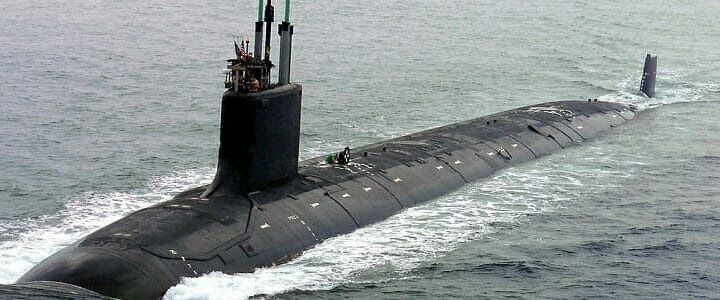The nation is about to have a long-overdue discussion of U.S. nuclear policy. Three major developments that emerged last week are driving the discussion: the announcement that the U.S. is beginning the six-month process of withdrawing from the 1987 Intermediate-range Nuclear Forces Treaty (following through on an announcement made last October); the revelation that the intelligence community believes that North Korea “is unlikely to give up all of its WMD stockpiles, delivery systems, and production capabilities;” and the introduction of a bill in Congress that would establish a “no first use” policy.
The Korean announcement is nothing earth-shattering. Pundits have made a big deal out of “contradictions” with the president’s statements, and while there’s a certain amount of truth to that, Director of National Intelligence Dan Coats’s prepared statement did not contain much on North Korea that outside observers hadn’t already been talking about. The president has always sought to play the “good cop” in negotiations with the Democratic People’s Republic, and will continue to do so. Regardless of how much progress has been made, the tensions of the Korean Peninsula are dramatically lower than they were a year ago. Things are still moving in the right direction.
The most serious development, though, is the attempt by Sen. Elizabeth Warren (D-Mass.), a member of the Senate Armed Services Committee , and Rep. Adam Smith (D-Wash.), chairman of the House Armed services Committee, to limit any U.S. use of nuclear weapons only to a response to a nuclear attack. While the bill does not have a realistic chance of passing, the fact that its sponsors felt emboldened enough to file it demonstrates that the looming debate over the the defense budget could make the recent fight over border wall funding look like a minor spat.
A non-strategic weapons imbalance
There can be little doubt that we are, as the National Security and National Defense Strategies said, in an era of great power competition. Like it or not, Russia and China represent existential threats to the United States. And our nuclear forces have not kept pace with the threats.
As last year’s Nuclear Posture Review pointed out, although the Strategic Arms Reduction Treaty and subsequent treaties have led to steep reductions in strategic nuclear warheads (those intended to be launched from a distance and aimed at strategic targets), the reductions in other nuclear weapons—”tactical” or “theater” nuclear weapons—have been a different story.
Tactical nuclear weapons have lower explosive yields than their strategic counterparts, and can thus be used in a combat theater. While the U.S. destroyed all its tactical nuclear weapons in the early 1990s (with the exception of 500 weapons, including approximately 200 B61 gravity bombs currently deployed to Europe), the Russians did not. A Congressional Research Service report last month estimates that Russia maintains “between 1,000 and 6,000 warheads for nonstrategic nuclear weapons in its arsenal.”
And since Russia has made it clear in Georgia and Ukraine that its territorial ambitions did not die with the old Soviet Union, a certain amount of deterrence is required. This is especially true given the Russian violation of the INF treaty by fielding the 9M729 intermediate-range ground-launched cruise missile.
As disturbing as its may seem, the only way to meet force is with force. So when faced with an adversary who possesses significantly more nuclear weapons, and more diverse delivery mechanisms, it makes little sense to announce that we won’t use ours unless they use theirs.
The weakness of the expeditionary model
The U.S. kept the balance in the Cold War by maintaining hundreds of thousands of forward-stationed troops across Europe. More than 400,000 U.S. service members lived and trained throughout Europe, primarily in Germany, serving to deter a Warsaw Pact invasion. The most recent figures put that presence at 62,000, including rotational forces in Poland.
The U.S. Army is now an “expeditionary force.” We deploy to combat from our home installations. Those forward-stationed forces would be hard-pressed to hold back a full-scale Russian invasion while we project power into Europe. The National Defense Strategy Commission released an assessment last November, in which it warned that facing Russia in Eastern Europe could result in “a decisive military defeat.”
“The prolonged, deliberate buildup of overwhelming force in theater that has traditionally been the hallmark of American expeditionary warfare would be vastly more difficult and costly, if it were possible at all,” the reports said. “Put bluntly, the U.S. military could lose the next state-versus-state war it fights.”
Given that stark assessment, it is inconceivable that we would limit our definition of “deterrence” to mean only deterring another nation’s use of its own nuclear weapons as Smith and Warren would have us do. We ought to seek to deter all types of military aggression, not just nuclear aggression. For a nuclear arsenal to be truly effective as a deterrent, potential enemies must know that the U.S. possess the ability, as well as the will, to meet military aggression with every weapon in our arsenal. That must, by definition, include nuclear forces.
I understand the return of great power competition on the heels of almost two decades of counterinsurgency warfare has intensified arguments over the proper role of U.S. military forces in the world order, and reignited the old cld War angst. Those discussions are healthy, even necessary. But while a legal requirement that restricts the commander-in-chief’s ability to use every available instrument of national power might make the cocktail party set in Cambridge and Berkley feel better, it ultimately weakens national security.
Knowing that the law prevents the American president from employing nuclear weapons except in response to another nuclear use would give our adversaries a much wider range of potential courses of action. And it would place a veritable ball-and-chain around our own planners’ ankles. That’s simply irresponsible.




